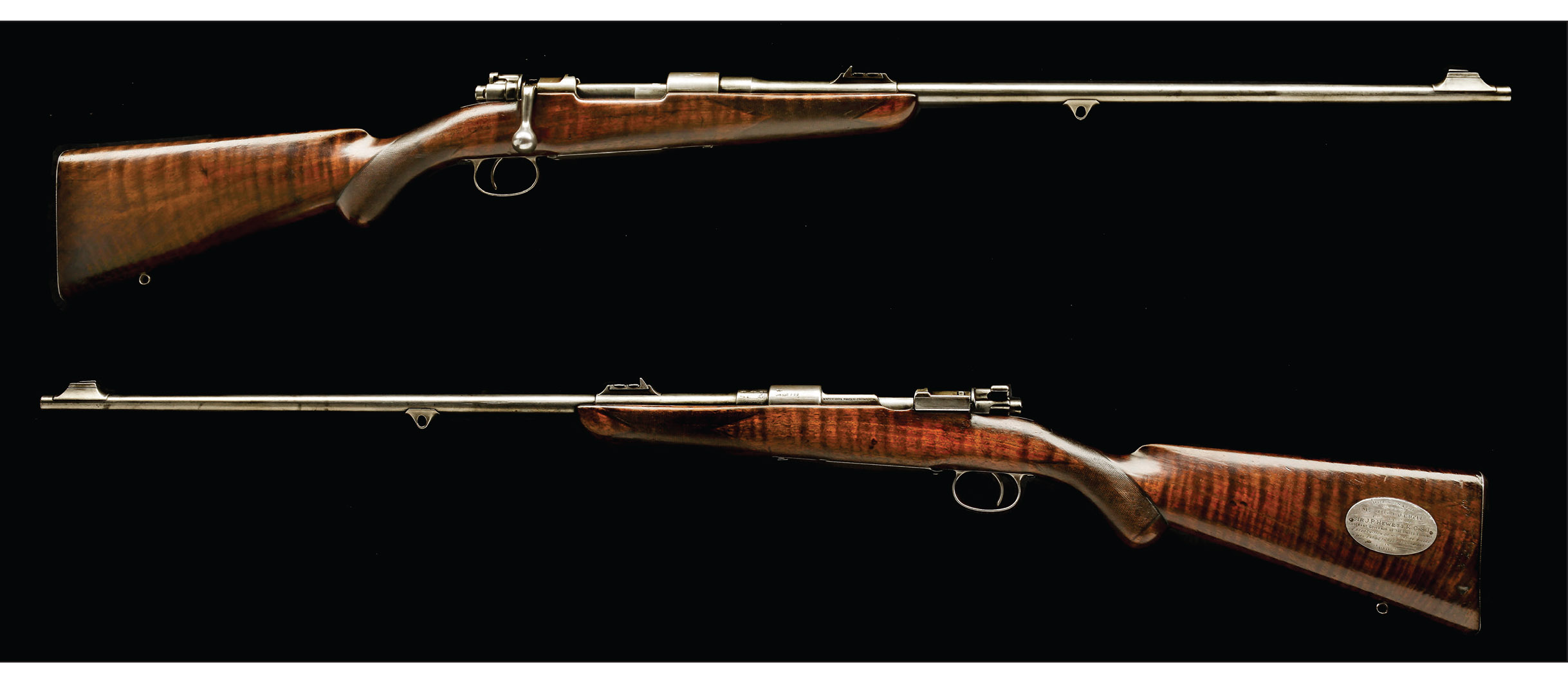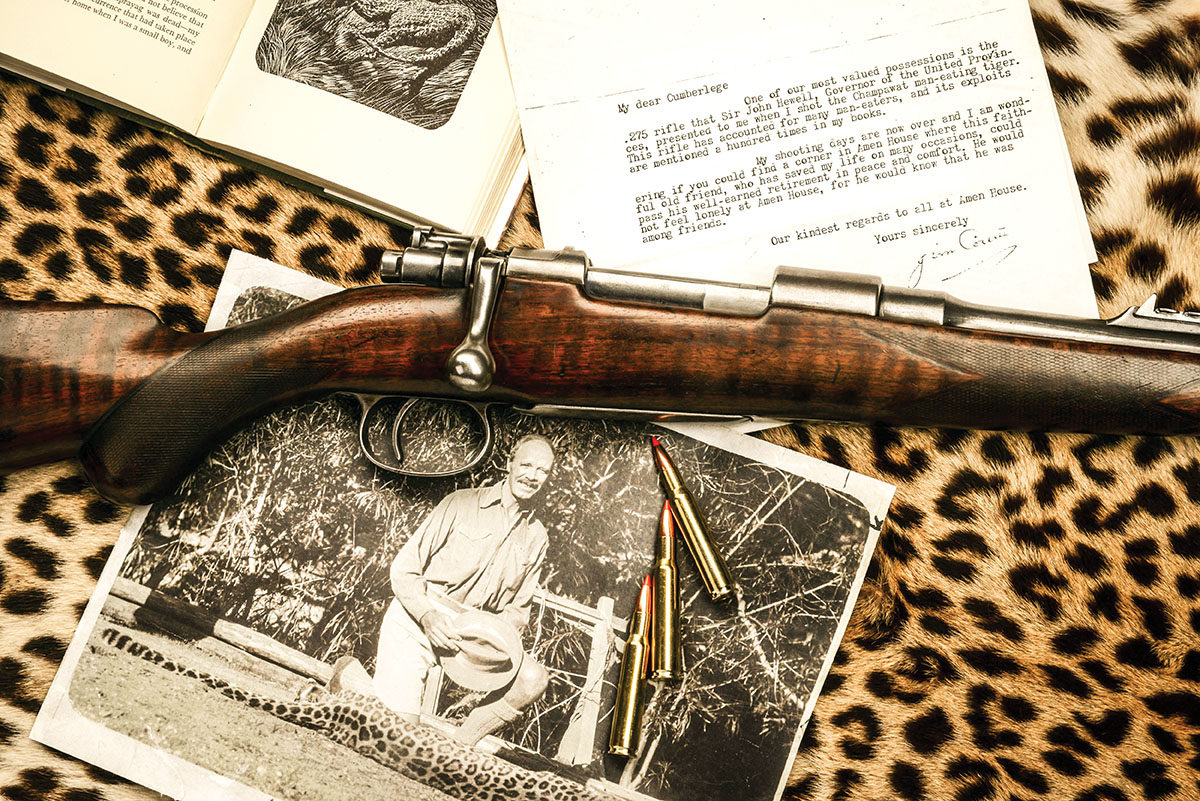Walnut Hill
And the Winner is . . .
column By: Terry Wieland | March, 24

Always, it comes back to handguns, and then only two make the cut: the derringer used to assassinate Abraham Lincoln, and the Browning that killed Archduke Franz Ferdinand and sparked the Great War. At that point, the contestants generally agree the former would be number one in America, the latter number one in Europe.
But what about rifles? What individual rifle could be singled out as the most likely to set collectors drooling and ready to part with millions?
There are three I could think of off the bat: David Crockett’s “Ol’ Betsy,” if such really existed – and assuming he had it with him at the Alamo; the borrowed Sharps Billy Dixon used at the Second Battle of Adobe Walls in 1874, and the rifle that killed Stonewall Jackson at Chancellorsville.
All three were connected with famous men, and used in momentous historic events. Of course, in Jackson’s case, it was not a deliberate shot like Dixon’s, but several bullets fired accidentally by his own troops. Of the three, the only one that might still exist – and be known for what it is – is Dixon’s borrowed Sharps.
To collectors, according to the cliché, what counts is condition above all, but the condition can be trumped by association. Robert M. Lee was one of America’s wealthiest and most knowledgeable gun collectors. He died in 2015, and his vast (and awe-inspiring) collection has been put up for auction, in bits and pieces, ever since. When it came to guns, Bob was Catholic: He loved them all. Many of his guns were custom-made for him, but he also gathered in any historic pieces that came his way.
If he had a particular interest historically, it was Colt revolvers and Winchester lever actions, and he collaborated with Larry Wilson on a number of books. I met Bob in 1992, in Kalispell, Montana, and we stayed friends until his death. In 2007, he helped me with an article for Gun Digest on the subject of restoration. Unlike some collectors, he was not dead against it. As he told me, an ancient Winchester of ho-hum lineage may be in such poor condition it’s of no interest to collectors, but restored to good condition by experts like Doug Turnbull, it would attract another level of collector and, in a century, become desirable in itself.
Of course, no one would lay an altering finger on the Billy Dixon rifle, if it were found.
Another rifle, or rifles, which would command serious interest are the ones Theodore Roosevelt took to Africa in 1909: famous man, famous event, famous makers in the form of Holland & Holland and Winchester. His H&H 500/450 NE double was a gift from a group of Roosevelt’s friends that included Frederick Courteney Selous, famous in his own right. In the 1980s, it underwent restoration by Holland’s – perfectly okay to collectors, since it qualifies as “factory” – and was then taken on safari by some Roosevelt descendants.
The safari was documented on film by George Butler (Pumping Iron) and released as the movie In the Blood. The film was a Who’s Who of modern safari, conducted by Robin Hurt, with a young Roosevelt using the Holland rifle to kill a Cape buffalo. The aforementioned Larry Wilson was included, and was even an investor in the project. According to one source, he was one of many who lost a lot of money on it. Even in the 1990s, a pro-hunting theater-release movie, with actual blood, was doomed.
But back to the point: The rifle was put up for auction in 1995 and sold for $500,000 (hammer price, before the buyer’s premium) and has changed hands several times since. It now resides, as I understand it, in a museum in Kentucky.
During his lifetime, Roosevelt owned many Winchesters and acquired many more as gifts to friends and associates. As a result, rifles with a Roosevelt connection are almost a sub-stratum of collecting and often come up for auction. But there is no Roosevelt rifle other than the Holland that might be a contender for “single most desirable,” unless it’s his Winchester Model 1895 in 405 Winchester. I believe (although I can’t be sure) he owned more than one,

If I had to guess, I would say a military connection is most desirable, followed by big-game hunting, with target shooting having the least positive influence in determining a rifle’s value. For one thing, everyone knows who Ulysses S. Grant was, and most would at least have heard of Stonewall Jackson, but who (other than target shooters and enthusiasts) remembers Harry Pope?
Another name sure to generate interest in the U.S. is Annie Oakley, and deservedly so. Oakley may have been the most gifted American rifle shot of all time. (Some say yes, others say no; I’m not offering an opinion.) Beyond her shooting, however, she was a remarkable person, admirable in every way – a feminist before the term existed, a firm believer in women learning how to shoot to defend themselves.
I am told that most of her guns – and there were many – are now in the possession of one prominent west coast collector, but he, being a secretive sort, can’t be immediately confirmed. Anyway, I am not sure which would qualify. Ideally, finding one that was presented to Miss Oakley by Buffalo Bill Cody, with the stock carved by Sitting Bull, and used in a shooting demonstration for Queen Victoria – well, that might do it, provided it had all the paperwork, letters, newspaper clippings, and an affidavit from one of the Queen’s ladies in waiting that she later said, “We were quite amused.”
All of that, even if it existed, would have a whiff of artifice about it, like the thousands of commemoratives that have flooded the market during the last 50 years. Anything deliberately intended to be collectible rarely is. Similarly, a gun ordered for the purpose of presenting it to some notable, complete with appropriate engraving, also lacks the je ne sais quoi of real prizes, such as John Wilkes Booth’s derringer or Gavrilo Princip’s Browning.
This is just an impression, but it seems to me that what pushes a gun’s value into the stratosphere is an element of chance – chance that it was acquired in the first place, chance that it was used for the purpose that made it famous and, finally, chance that it survived down through the years to end up on the auctioneer’s table.
In the end, hypotheticals and the whisky supply aside, most such discussions come down to a poll as to what rifle each of us wishes he owned.
For my part, I would take one of Jim Corbett’s Mauser 275 Rigby (7x57) rifles. He owned two, one made by John Rigby & Co., and presented to him after he killed the Champawat man-eating tiger in 1907, and another he bought himself and carried as habitually as other men carry a walking stick. I’d prefer the latter, but I would take the former. I’m not as fussy as some people.


